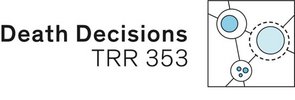B02: The role of RIP kinase 1 in the decision of apoptosis and pyroptosis induction during intracellular bacterial infection
Project Leader: Gregor Ebert
Regulated cell death contributes to the host’s defense against pathogens by removing their replicative niche. We recently found that Salmonella-infected monocytes can undergo both apoptosis and pyroptosis and have determined the interconnectivity of these cell death modalities. The cellular kinase RIPK1 is a well characterised key regulator of regulated cell death and inflammation. The relevance and role of RIPK1 in the decision-making of infected cells to induce pyroptosis or apoptosis, however, remains elusive. Notably, others have recently described RIPK1-dependent activation of Gasdermins in cells infected with bacteria to trigger pyroptosis. Intriguingly, we found evidence that the levels of RIPK1 may be decisive in promoting pyroptosis in the absence of apoptosis. We hypothesize that RIPK1 plays an essential role in the decision-making of infected cells to undergo different cell death modalities as cellular fail-safe processes. In this project we aim to identify RIPK1-regulated mechanisms for the decision-making in the induction of pyroptosis when apoptosis is absent using Salmonella infection as a model. In the first part, we will dissect the molecular functions and interconnectivity of RIPK1 to regulate cell death decisions and outcomes during infection using gene-targeted in vivo and cellular models as well as signal transduction network analysis. In the second part, will delineate how RIPK1 expression and activity affects cell death decisions in vitro and in vivo. In the third part, we will determine the cellular stimuli modulating RIPK1 activity towards pyroptosis. The multi-faceted properties of RIPK1 in the decision making of cell death modalities and its role in pyroptosis during intracellular infection are not well understood. Delineating the interconnectivity and role of RIPK1 in the regulation of cell death decisions of pyroptosis and apoptosis will help us to further understand the complexity and variable tasks of RIPK1-mediated activities in driving survival and cell death


